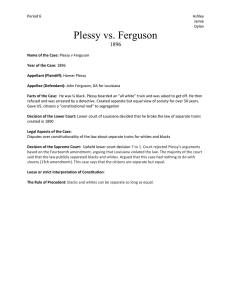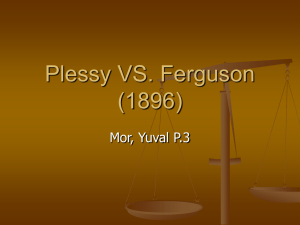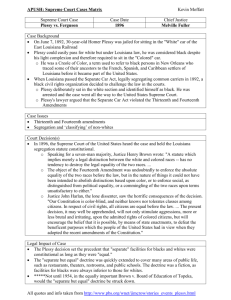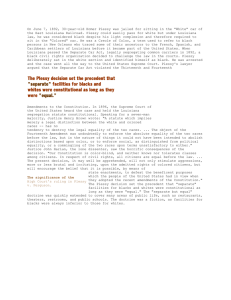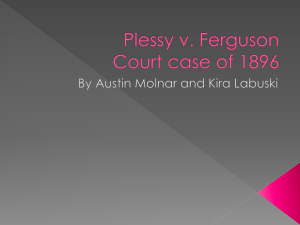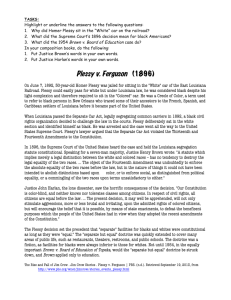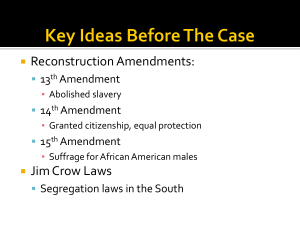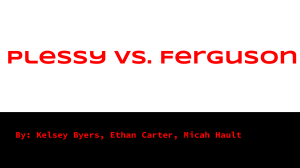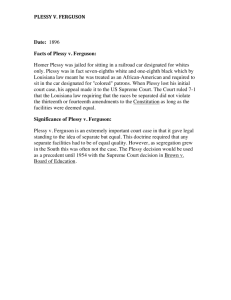Plessy v. Ferguson - Hauppauge School District
advertisement
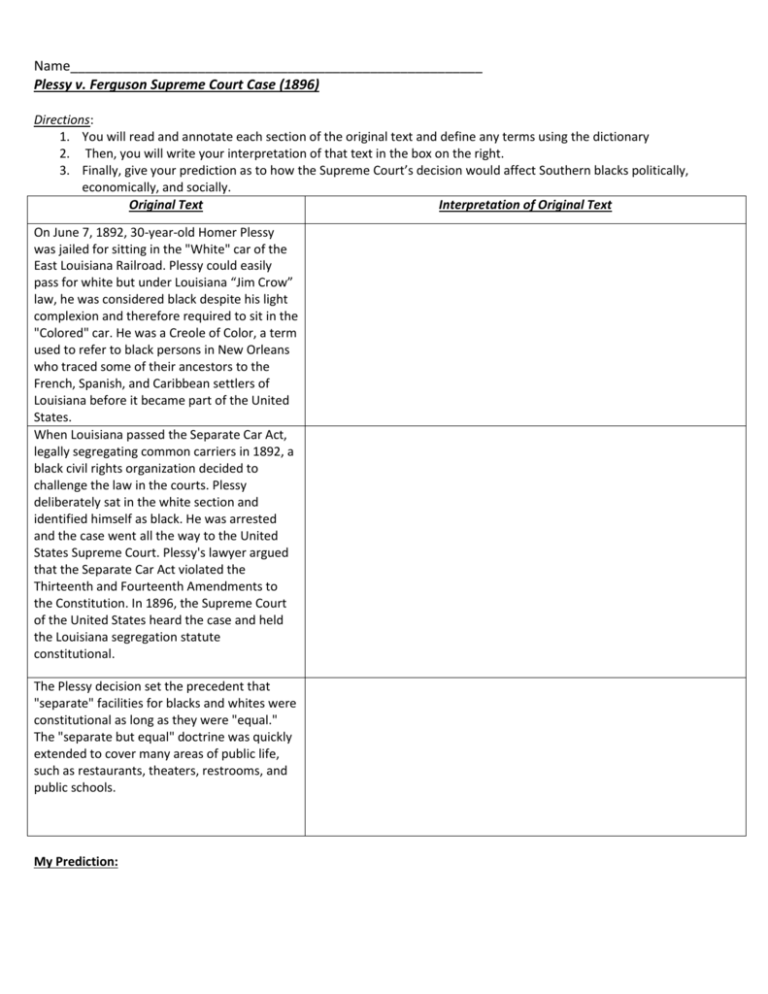
Name_______________________________________________________ Plessy v. Ferguson Supreme Court Case (1896) Directions: 1. You will read and annotate each section of the original text and define any terms using the dictionary 2. Then, you will write your interpretation of that text in the box on the right. 3. Finally, give your prediction as to how the Supreme Court’s decision would affect Southern blacks politically, economically, and socially. Original Text Interpretation of Original Text On June 7, 1892, 30-year-old Homer Plessy was jailed for sitting in the "White" car of the East Louisiana Railroad. Plessy could easily pass for white but under Louisiana “Jim Crow” law, he was considered black despite his light complexion and therefore required to sit in the "Colored" car. He was a Creole of Color, a term used to refer to black persons in New Orleans who traced some of their ancestors to the French, Spanish, and Caribbean settlers of Louisiana before it became part of the United States. When Louisiana passed the Separate Car Act, legally segregating common carriers in 1892, a black civil rights organization decided to challenge the law in the courts. Plessy deliberately sat in the white section and identified himself as black. He was arrested and the case went all the way to the United States Supreme Court. Plessy's lawyer argued that the Separate Car Act violated the Thirteenth and Fourteenth Amendments to the Constitution. In 1896, the Supreme Court of the United States heard the case and held the Louisiana segregation statute constitutional. The Plessy decision set the precedent that "separate" facilities for blacks and whites were constitutional as long as they were "equal." The "separate but equal" doctrine was quickly extended to cover many areas of public life, such as restaurants, theaters, restrooms, and public schools. My Prediction:
